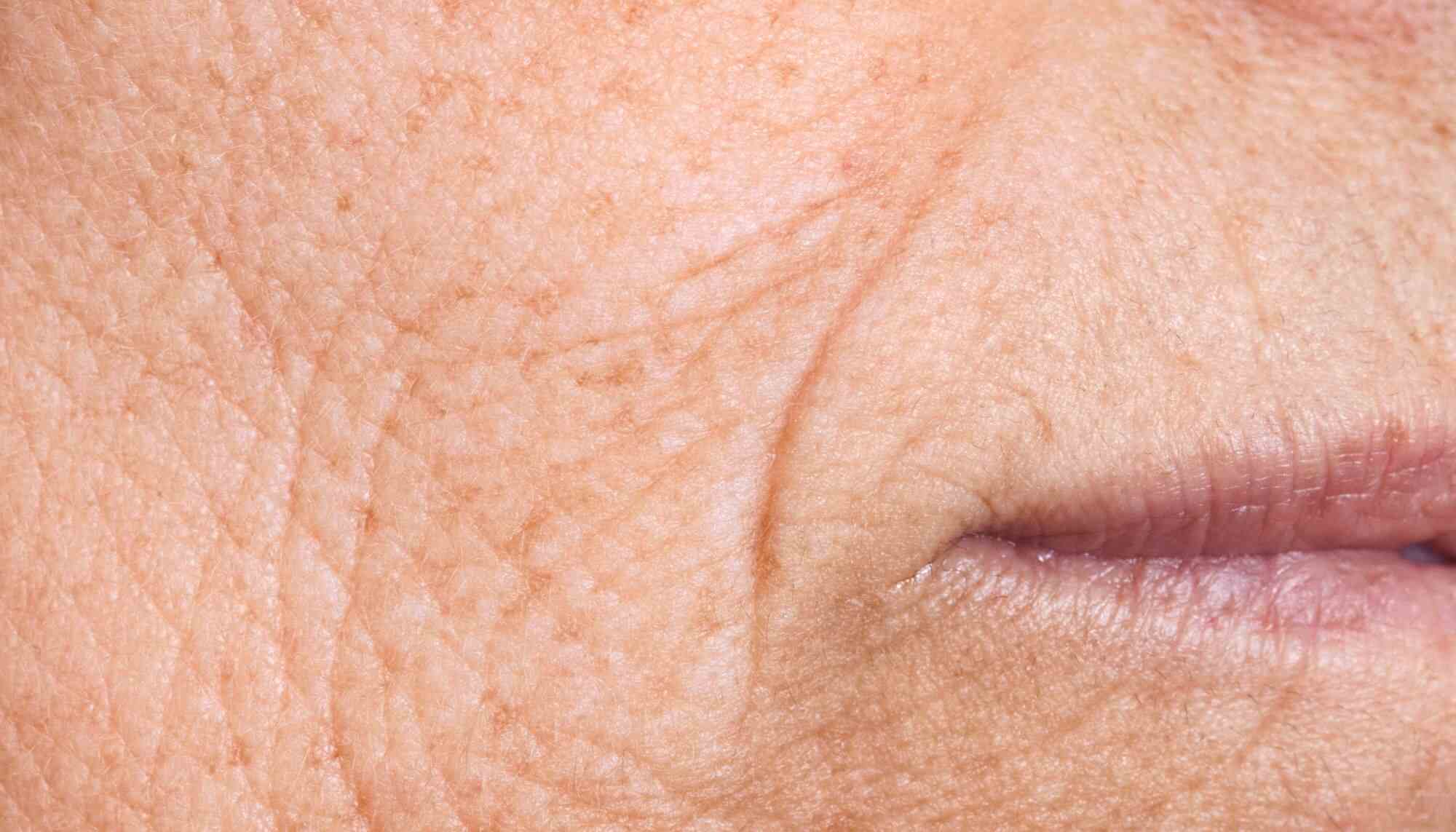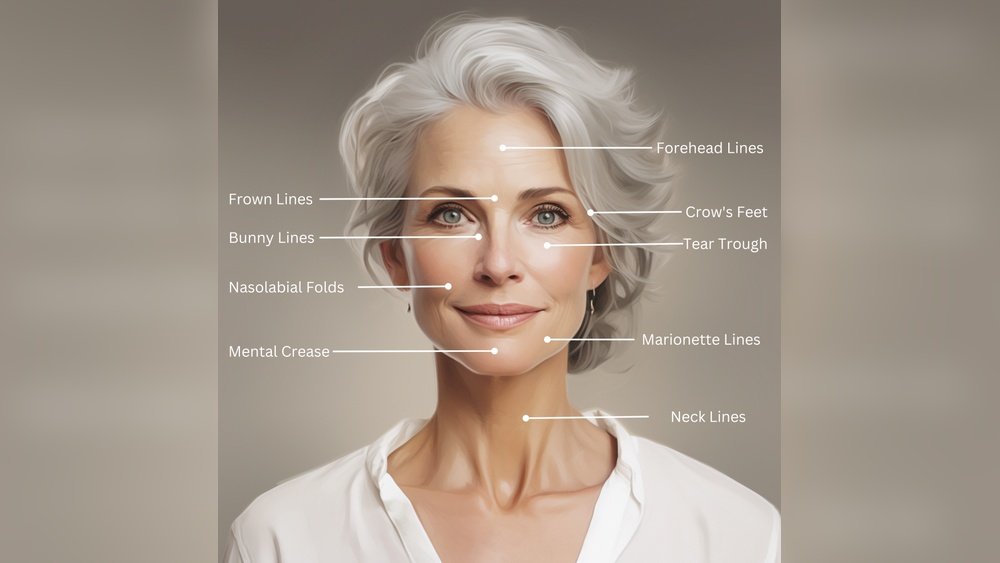Have you noticed your cheeks looking thinner, with a delicate, crepe-like texture that wasn’t there before? Skin crepiness on your cheeks can feel frustrating and may even make you look older than you feel.
But why does this happen to your skin, especially in such a sensitive and visible area? Understanding the causes behind crepey skin is the first step to tackling it effectively. Whether it’s sun damage, dehydration, or natural aging, knowing what’s affecting your skin will help you choose the right solutions.
Keep reading to discover why your cheeks have that crepey appearance and how you can restore smooth, youthful skin with simple, proven steps. Your skin deserves the best care, and you’re closer to that than you think.

Credit: dermatlanta.com
Causes Of Crepey Skin On Cheeks
Crepey skin on the cheeks happens when the skin loses its firmness and smoothness. This condition makes the skin look thin and wrinkled, similar to crepe paper. Several factors cause this change in skin texture.
Understanding these causes helps to manage and prevent further skin damage. The main reasons include natural aging, sun exposure, and lifestyle habits. Each plays a role in breaking down the skin’s structure.
Sun Damage And Uv Exposure
Ultraviolet (UV) rays from the sun break down collagen and elastin in the skin. These proteins keep skin firm and elastic. Over time, sun exposure causes the skin to weaken and become crepey. Using sunscreen daily can reduce this damage.
Aging And Loss Of Collagen
As you age, your skin naturally produces less collagen. This causes the skin to thin and lose its strength. Less collagen means less support for the skin, leading to crepiness on the cheeks. Aging also slows down skin cell renewal.
Dehydration And Dry Skin
Dry skin looks more wrinkled and crepey. Lack of moisture makes the skin lose its smooth texture. Drinking water and using moisturizers help keep skin hydrated and plump. Dry skin can worsen the appearance of crepiness.
Poor Lifestyle Habits
Smoking, poor diet, and lack of sleep weaken the skin over time. Smoking reduces blood flow and damages collagen. Unhealthy foods lack nutrients needed for skin repair. Sleep helps the skin regenerate. Bad habits speed up skin aging.
Environmental Factors
Pollution and harsh weather can harm the skin barrier. These factors cause dryness and irritation. Over time, they contribute to the crepey texture on cheeks. Protecting your skin from the environment helps maintain its health.

Credit: health.clevelandclinic.org
Sun Damage And Skin Aging
Sun damage plays a major role in skin aging and crepiness on the cheeks. The sun’s ultraviolet (UV) rays break down collagen and elastin fibers in the skin. These fibers keep the skin firm and elastic. Over time, the skin loses its strength and begins to sag. This causes the thin, wrinkled texture known as crepey skin.
Repeated sun exposure also causes uneven skin tone and dryness. It speeds up the natural aging process. The skin becomes fragile and more prone to wrinkles. Protecting your skin from the sun can slow down these changes.
How Uv Rays Affect Skin Structure
UV rays penetrate the skin deeply. They damage the cells that produce collagen. Collagen gives skin its firmness and smoothness. Without enough collagen, skin becomes weak and loose. Elastin fibers, which help skin bounce back, also break down. This leads to crepey, thin skin on the cheeks.
Visible Signs Of Sun-induced Aging
Sun-damaged skin often shows fine lines and wrinkles. Dark spots and uneven color may appear. The skin feels rough and dry. In some cases, the skin looks thin and fragile. These signs show that the skin’s natural repair system is overwhelmed.
Preventing Further Damage
Wearing sunscreen daily helps protect skin from UV rays. Hats and protective clothing add extra defense. Avoiding long sun exposure reduces the risk of damage. Using gentle skincare products supports skin repair. Staying hydrated also keeps skin healthy and plump.
Daily Skincare Tips
Daily care plays a big role in managing crepey skin on cheeks. Simple skincare habits can improve skin texture and firmness. Consistent use of the right products helps keep skin smooth and healthy. Here are some effective daily skincare tips to reduce skin crepiness.
Moisturizing With Ceramides
Ceramides help rebuild the skin’s natural barrier. They lock in moisture and prevent dryness. Use a moisturizer with ceramides every day, especially after cleansing. This keeps your skin hydrated and soft. Moisturized skin is less likely to look thin and crepey.
Using Retinoids
Retinoids come from vitamin A and boost collagen production. Collagen makes skin firm and elastic. Start with a low concentration to avoid irritation. Apply retinoids at night for best results. Over time, retinoids smooth fine lines and improve crepey skin.
Gentle Exfoliation
Exfoliation removes dead skin cells and reveals fresh skin below. Use gentle exfoliants like alpha hydroxy acids (AHAs) once or twice a week. Avoid harsh scrubs that can damage skin. Soft exfoliation supports skin renewal and reduces rough texture.
Applying Antioxidants
Antioxidants protect skin from damage caused by free radicals. Vitamin C is a powerful antioxidant that brightens and firms skin. Apply antioxidant serums in the morning before sunscreen. Antioxidants help maintain collagen and slow skin aging.
Lifestyle Habits For Better Skin
Improving skin health involves more than just creams and treatments. Daily lifestyle habits play a key role in reducing skin crepiness on cheeks. Small changes in routine can lead to noticeable skin improvements over time. Focus on habits that nourish your skin from inside out.
Building a consistent routine around hydration, diet, sleep, and alcohol intake supports healthier skin. These habits help maintain skin elasticity and reduce early signs of aging like crepiness. Simple steps make a big difference in skin texture and appearance.
Hydration And Diet
Water keeps your skin soft and elastic. Drinking enough water daily helps flush out toxins and supports cell repair. Aim for at least eight glasses of water each day.
Eating foods rich in vitamins and antioxidants strengthens skin cells. Include fruits, vegetables, nuts, and fish in your meals. Foods high in vitamin C and E boost collagen production and protect skin from damage.
Sleep And Alcohol Reduction
Quality sleep allows your skin to repair and regenerate. Try to get seven to eight hours of restful sleep every night. Poor sleep increases stress hormones that break down collagen.
Cutting back on alcohol helps maintain skin moisture and collagen. Alcohol dehydrates the skin and speeds up aging signs like crepiness. Limit alcohol intake to protect your skin’s natural glow and firmness.
Professional Treatment Options
Professional treatment options can significantly improve crepey skin on your cheeks. These treatments target the root causes like collagen loss and sun damage. They help restore skin’s firmness and smoothness effectively. A dermatologist can guide you to the best choice based on your skin type and condition.
Prescription Creams
Prescription creams often contain retinoids or peptides. These ingredients boost collagen production and skin renewal. They help reduce fine lines and improve texture. Using these creams under medical supervision ensures safety and better results. Results usually appear after several weeks of consistent use.
Laser Therapy
Laser therapy works by stimulating collagen deep within the skin. It promotes new collagen growth and tightens loose skin. Treatments are quick and require minimal downtime. Multiple sessions may be needed for noticeable improvement. Laser therapy can also reduce sun damage and pigmentation.
Dermal Fillers
Dermal fillers add volume to hollow or sagging cheeks. They smooth out crepey skin by plumping the area. Results are immediate and can last several months. Fillers are injected by a trained professional for natural-looking results. This option is suitable for moderate crepiness with volume loss.
Collagen Induction
Collagen induction uses tiny needles to create micro-injuries in the skin. This triggers the body’s healing process and new collagen production. Treatments improve skin texture, firmness, and elasticity. Multiple sessions spaced weeks apart are recommended. It is a minimally invasive option with good results over time.

Credit: www.utahfacialplastics.com
Preventing Future Crepey Skin
Preventing future crepey skin on your cheeks requires a careful approach to protect and nourish your skin daily. Taking simple, consistent steps can help maintain skin firmness and smoothness. Focusing on sun protection and a solid skincare routine is key. These habits slow down skin aging and keep your cheeks looking healthy.
Sun Protection Strategies
Sun exposure causes skin to lose elasticity and develop crepiness. Use a broad-spectrum sunscreen with SPF 30 or higher every day. Apply it even on cloudy days and reapply every two hours outdoors. Wear wide-brimmed hats and sunglasses to shield your face. Seek shade during peak sunlight hours, usually from 10 a.m. to 4 p.m. Avoid tanning beds as they speed up skin damage. These habits protect collagen and elastin in your skin.
Consistent Skincare Routine
Cleanse your face gently twice a day to remove dirt and oils. Use moisturizers containing ceramides to lock in hydration and strengthen the skin barrier. Include products with retinol or alpha hydroxy acids to boost collagen and exfoliate dead skin cells. Apply antioxidant serums like vitamin C to fight free radicals. Avoid harsh scrubs that can irritate the skin. Stick to this routine every day for the best results.
Frequently Asked Questions
What Causes Crepey Skin On Cheeks?
Crepey skin on cheeks results from sun damage, aging, collagen loss, dehydration, and reduced skin elasticity.
How Do I Fix Crepey Skin On My Face?
Use retinol and alpha hydroxy acids to boost collagen. Moisturize daily with ceramides. Protect skin with sunscreen and antioxidants. Stay hydrated and eat healthily. Consult a dermatologist for prescription creams, laser treatments, or fillers to improve skin texture and firmness.
What Deficiency Causes Crepey Skin?
Crepey skin often results from collagen and elastin deficiency. These proteins maintain skin’s firmness and elasticity.
How To Get Rid Of Crepey Skin On Cheeks Naturally?
Moisturize daily with ceramide-rich creams to lock moisture. Use retinol and gentle exfoliants like alpha hydroxy acids. Apply antioxidant serums and always protect skin with sunscreen. Stay hydrated and eat a nutrient-rich diet to support skin health naturally.
Conclusion
Skin crepiness on cheeks often results from sun exposure and aging. Keeping skin moisturized helps maintain its softness and elasticity. Using products with retinol and antioxidants supports collagen production. Protecting your skin daily with sunscreen prevents further damage. Drinking water and eating healthy foods also improve skin health.
For stubborn crepiness, consult a dermatologist about treatments. Taking simple steps can make your skin look smoother and healthier. Don’t ignore skin care—it truly makes a difference over time.
 Skip to content
Skip to content 